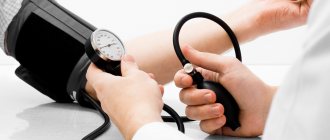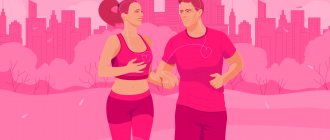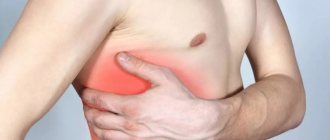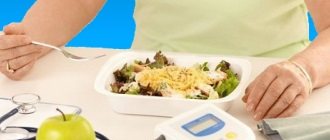The article was prepared by a specialist for informational purposes only. We urge you not to self-medicate. When the first symptoms appear, consult a doctor.
Protein is a substance without which the body cannot exist. It must be supplied with food daily. For normal cell functioning, it is recommended to consume at least 50 g of protein per day. Compliance with this norm will allow you not to lose muscle mass and improve your health. If your protein intake is limited, there are some easy ways to increase the amount of protein in your diet.
When eating, start your meal with protein.
When eating, you should first eat foods high in protein. They are eaten before starchy foods. This is due to the fact that protein stimulates the synthesis of PYY, a hormone responsible for the feeling of fullness, and also reduces the level of ghrelin, a hormone that promotes hunger. Its intake with food stimulates metabolic processes and maintains their activity not only after meals, but also during the night's rest.
Protein is the nutrient that prevents insulin levels from rising in the blood after meals, which has been proven in scientific research. One group of people was asked to consume protein foods and vegetables before carbohydrate foods, and the second group - after. Blood glucose levels were then measured. Scientists found that its indicators were lower in those subjects who received protein food at the beginning of the meal [1].
Diagnosis of protein deficiency
The simplest method for initial diagnosis is to determine in a biochemical blood test such an indicator as “total protein”.
In addition, it is necessary to establish the level
of albumin in the blood plasma
- as a rule, in conditions of insufficient supply of proteins from the outside, the liver compensatory increases the production of this fraction.
Since all enzymes, as previously mentioned, have a polypeptide basis, you can additionally rely on ALT and AST - they are often prescribed by nutritionists and doctors. However, here it is important to remember the no less dominant role in the functioning of these vitamin B6 enzymes and to be able to correctly differentiate the causes and factors of a decrease in these liver panel indicators.
An increase in the amino acid homocysteine indicates a violation of methylation processes.
in blood serum - in this case, you can suspect polymorphism in one or more genes that regulate the folate cycle and do a genetic test. A little higher, we said that these “breakdowns” are accompanied by an increase in the concentration of histamine due to a decrease in its neutralization - patients experience allergies, skin rashes and even bronchial asthma.
Low acidity is determined by pH testing
, which necessarily accompanies fibrogastroduodenoscopy with the collection of biopsy material - this is fundamentally important for establishing the stage of the process and preventing the future development of stomach cancer. The following laboratory tests will be indicative:
- Amino acids in urine (tendency to decrease).
- Reducing the concentration in the blood of metals absorbed in an acidic environment: selenium, manganese, zinc and magnesium.
Diagnosis of Helicobacter
, which is necessarily carried out in order to establish indications for the use of antibiotic therapy, consists of:
- Determination of bacterial antigens in feces.
- Breath tests with labeled urea.
- Determination of antibodies in the patient's blood.
- Biopsy during fibrogastroduodenoscopy followed by histological analysis.
To the gastropanel,
which is quite often prescribed to diagnose the condition of the gastric mucosa, includes, along with the other 3 biomarkers, such an indicator as
gastrin-17
- another stimulator of hydrochloric acid secretion, produced by the pyloric region of the stomach. Its decrease indicates a high probability of atrophic gastritis, an autoimmune disease accompanied by a decrease in the number of functioning epithelial cells.
About the condition of the gallbladder
, as a possible culprit for impaired activation of pancreatic enzymes (including proteolytic ones) is judged by:
- Coprogram.
- Biochemical blood test:
- ALT, AST.
- Gamma glutamyl transferase.
- Direct and indirect bilirubin.
- Total cholesterol.
- HDL, LDL (additionally - apoprotein B).
- alkaline phosphatase.
- Organic acids in urine (for the diagnosis of bacterial overgrowth syndrome).
An increase in the number of colonies of residents of our intestines is accompanied by an increase in the activity of fermentation processes and, as a consequence, excess gas production. This, in turn, complicates the secretion of pancreatic juice and bile due to increased pressure in the intestinal lumen.
- Ultrasound of the abdominal organs.
Cheese snacks
You can increase your protein intake in your diet with the right snacks. Cookies, buns, crackers, chips and other similar products are not the best option. They contain little protein. Their healthy and no less tasty analogue is cheese. It is lower in calories, rich in protein and calcium.
The highest protein cheeses are Parmesan cheese, Pecorino Romano, Gruyère and Swiss cheese.
Eating cheese during snacks not only saturates the body with the protein it needs, but also does not lead to an increase in cholesterol levels in the blood. The same cannot be said for oil-soaked chips. Your heart will be grateful for such a snack.
Normal level of total protein in blood
According to accepted standards and directives of the WHO (World Health Organization), the following indicators (grams per liter) are considered the norm for total protein in the blood:
- newborns – from 45 to 70;
- children under 3 years old – from 51 to 73;
- children under 15 years old - from 60 to 81;
- from 15 years and older – from 65 to 85;
- over 65 years old - from 62 to 81.
Indicators are conditional. Much more important for diagnosis are the indicators of individual proteins, as well as their derivative elements.
Normal values during pregnancy
Low total protein in the blood during pregnancy can provoke the development of many pathologies in the unborn child and therefore requires medication to increase it. It is protein that acts as a “building component”; organs, tissues, neurons, blood, and so on are formed from it.
Accordingly, its deficiency will lead to the fact that the fetus will not be able to fully form. This is especially important in the second and third trimester, when the child’s body is actively gaining weight.
Blood protein levels decrease significantly during pregnancy. This is a normal phenomenon, and indicates that a significant part of it is transported through the placenta to the body of the unborn child.
If for an adult the norm is about 65–85 grams of protein per liter of blood, then during pregnancy this figure drops to 55–65 grams per liter . Accordingly, a decrease in blood protein levels below 55 is considered a deviation from the norm.
Eggs for breakfast
Oatmeal contains more protein compared to all other cereals. One classic serving contains about 6 g of protein. However, if you compare oatmeal with eggs, it loses significantly. Thus, three chicken eggs contain 19 g of protein, as well as selenium and choline necessary for the body.
A number of studies have shown that eating eggs can reduce appetite and keep you feeling full longer. Therefore, a person does not overeat during dinner.
Eggs for breakfast are not only a way to fill your body with protein, but also a “cure” for fighting bad LDL cholesterol. Therefore, their consumption in food is a prevention of cardiovascular diseases [2], [3].
Read more: TOP protein-rich foods
Nutrition in the fight against cancer
The diagnosis of cancer is no longer a death sentence. Modern treatment is more successful than what it was 20-30 years ago.
Oncological diseases are accompanied by many changes in the human body. These changes may be the body's response to the tumor and the side effects of drug treatment. In addition, side effects of treatment, such as nausea or changes in taste, often cause loss of appetite or inability to eat enough food. In this regard, products for oncology must be carefully selected and, in some cases, prepared in a special way.
Cancer patients face the problem of not being able to eat enough food to meet the nutritional needs of the body, which leads to weight loss.
Most often, weight loss is a consequence of lack of appetite and/or a side effect of treatment.
In overcoming cancer, the main goal is to maintain an adequate weight and consume healthy foods that provide the body with calories and nutrients.
Eating a balanced diet that includes essential foods before, during and after treatment will help you feel better and recover better. This explains why it is important to eat only healthy foods if you have cancer.
Insufficient intake of calories and/or nutrients such as protein, vitamins and minerals is a common problem in the nutrition of cancer patients. Protein and calories are important for providing the body with energy, fighting infection, and therefore for a speedy recovery. Your diet during chemotherapy, as well as your diet after chemotherapy, deserves utmost attention.
Specialized nutrition is specifically designed for cancer patients.
Consultation on modern specialized nutrition products can be obtained from a doctor.
In most cases, treatment of cancer is complex or includes one of the following stages - surgery, chemotherapy and radiotherapy.
During chemotherapy or radiotherapy, consumption of usual food in the same quantities may be difficult due to lack of appetite, impaired sense of taste and perception of smell.
Regular food seems less attractive to you and, as a result, you eat it less. The body no longer receives sufficient support to fight the disease. Take nutrition seriously during radiotherapy and chemotherapy: choose food that will meet the body's needs even in small quantities. Dietary problems you experienced before your diagnosis may be exacerbated by the cancer itself and intensive treatment.
Using specialized nutrition before starting any type of therapy will improve your condition, and in case of surgery, it will speed up the healing of surgical wounds and reduce the risk of postoperative complications.
Surgical intervention
- The tumor is removed surgically.
- Surgery can be combined with a course of chemotherapy or radiotherapy.
- After surgery, a recovery period is required in the hospital, and then at home.
Surgery is stressful for the entire body. The body's need for nutrients and energy increases.
The choice of food products during oncology should be adjusted. It is necessary to take increased amounts of nutrients, especially protein, which plays an important role in the recovery process, especially in wound healing and fighting infection.
Choose foods high in protein and calories (eg eggs, cheese, whole milk, nuts, poultry and fish). However, remember that even very good, complete foods can be poorly absorbed due to impaired absorption and digestion, especially after operations on the gastrointestinal tract.
An alternative or addition to your regular diet can be specialized nutrition (Nutrizon, Nutridrink, Nutridrink Compact), which ensures easy and rapid absorption of all necessary nutrients. Talk to your doctor about the specialized nutrition you need. Properly selected food products for oncology will facilitate the body’s recovery process and speed up recovery.
Radiation therapy
- X-rays and other types of radiation are used to destroy cancer cells.
- Radiotherapy can be used on its own or in combination with surgery and chemotherapy.
Radiation therapy may cause problems in eating normal foods, especially when the digestive organs are exposed to radiation. Some side effects appear: dry mouth, nausea, vomiting, diarrhea, constipation.
In some cases, side effects may contribute to loss of appetite, difficulty swallowing, and the inability to eat solid food due to the development of stomatitis and mucositis.
Modern specialized nutrition (Nutrizon, Nutridrink, Nutridrink Compact) will help solve these difficulties and provide the body with all the necessary nutrients. Talk to your doctor or dietician about how to properly manage your cancer diet during radiation therapy to ensure a speedy recovery.
Chemotherapy
- Special chemicals are used to destroy cancer cells.
- Chemotherapy is often used in combination with surgery and/or radiotherapy.
- Chemotherapy can be accompanied by side effects, the severity of which depends on the type and dose of drugs used and the condition of the body.
Although the side effects of chemotherapy vary and depend greatly on the type and dose of drugs used, side effects such as nausea, vomiting, fatigue, diarrhea, and constipation are common. In addition, some medications contribute to changes in taste sensations, which leads to a complete aversion to food.
Carrying out the prescribed course of chemotherapy in full is the basis for the success of treatment. A side effect of chemotherapy may be loss of appetite.
Reducing the amount of food consumed leads to insufficient supply of nutrients to the body. The result is weight loss or other disruptions in the functioning of the entire body, which may lead to interruption of the course of chemotherapy and, consequently, a decrease in the effectiveness of treatment. Therefore, eating regularly during chemotherapy is very important.
In some cases, eating regular food becomes insufficient to meet the daily requirement. In such cases, it is important to choose the right additional nutrition during chemotherapy. Modern specialized nutrition products (Nutrizon, Nutridrink, Nutridrink Compact) will help prevent weight loss and maintain overall nutritional status, which, in turn, will help to endure the disease and recover after difficult treatment.
If you feel that you are unable to take in adequate amounts of regular food, consult your doctor or dietitian. A properly selected diet during chemotherapy will help avoid unwanted consequences that can be caused by this method of treatment.
- Eat small meals, but often.
- Reduce the amount of liquid you drink during meals, and instead drink between meals.
- Eat at a time when you have a good appetite - some patients find that their appetite is better in the morning.
- Have something on hand that you can snack on at any time.
- Drink liquids (soup, juice) instead of solid foods.
- Choose high-calorie foods (such as nuts) to increase the supply of nutrients in a small amount of food.
- Modern specialized nutrition products - Nutridrink, Nutridrink Compact, Nutrizon - will help provide complete and balanced nutrition.
- Eat food that you think looks attractive and smells good.
- If a certain type of food tastes or smells strange, choose an alternative.
- Use marinades, sauces, mayonnaise or small amounts of seasonings to impart the desired flavor to food.
- The following will help reduce the smell of food: using a lid during cooking; using a kitchen hood; serving food at room temperature.
Food products that are usual in the diet for oncology are steamed, boiled, stewed, and for mucositis they are served pureed.
Diet
Food is taken in small portions in a warm (not hot!) form (40-50°C). Eating small, frequent meals helps overcome nausea and eases the gastrointestinal tract. Ice cream, sucking on pieces of ice and lemon also help with nausea.
Below is information about which foods can be eaten during oncology, indicating the recommended method of preparation.
Bread and flour products
Recommended: dry biscuit, soft biscuits, baby cookies, cookies soaked in milk, kefir or weak tea. Excluded: rye bread, fresh bread, pancakes, pies, pies, baked goods.
Meat and poultry
Recommended: lean meats (beef, veal, rabbit) without tendons and fascia, chicken and turkey without skin, boiled or steamed, for mucositis - pureed (cutlets, dumplings, meatballs, puree, soufflé, roll, etc.), and steamed tongue and liver. Excluded: fatty and stringy varieties of meat and poultry, fried and stewed, canned food, products with dough (dumplings, khinkali, etc.).
Fish
Recommended: low-fat types without skin, in pieces or in the form of cutlet mass, boiled or steamed, without bones (sorted). Excluded: fatty species (sturgeon, stellate sturgeon, etc.), smoked, salted, fried, stewed, fish with bones.
Eggs
Recommended: in the form of a steam omelette. Excluded: hard-boiled, fried eggs and scrambled eggs, raw egg whites.
Dairy
Recommended: children's cottage cheese, cottage cheese in dishes (casserole, puddings), yoghurts, any dairy products intended for children (in original packaging) Excluded: dairy products with high acidity, for mucositis - fatty dairy products, sharp cheeses.
Fats
Recommended: refined olive and sunflower oils added to dishes. Butter on sandwiches and in dishes should only be consumed if there is no mucositis and should not be consumed if your child is receiving asparaginase. Excluded: other fats, overcooked butter.
Cereals, pasta and legumes
Recommended: porridges cooked in milk or water - semolina, well-cooked rice, pureed buckwheat and oatmeal. Steam puddings, souffles, cutlets from ground cereals. For mucositis, exclude: millet, pearl barley, barley, buckwheat (kernel), legumes, whole pasta.
Vegetables
Recommended: beets, potatoes, carrots, cauliflower, green peas, boiled in water or steamed and pureed (mashed potatoes, soufflé); steam puddings; zucchini and pumpkin, cut into pieces, boiled. Excluded: other vegetables, salted, pickled, pickled vegetables and mushrooms, canned vegetables.
Soups
Recommended: from pureed or very finely chopped vegetables, dairy, cereal, pureed vermicelli or homemade noodles (finely chopped) with the addition of permitted vegetables; creamed milk soups, made from vegetables, from pre-cooked chicken or meat, in weak (half-and-half) broth. Season with butter and non-acidic sour cream. Excluded: strong meat, chicken, fish broth, mushroom and strong vegetable broths, borscht, cabbage soup, okroshka.
Fruits, sweet dishes and sweets
Recommended: ripe sweet fruits and berries in the form of purees, jelly, jellies, mousses, mashed compotes; baked apples (without skin); sweet dishes with whipped proteins (mousses, sambuca), jelly, jams and preserves from sweet berries and fruits, ice cream (can only be consumed if there is no mucositis, and should not be consumed if your child receives asparaginase). Excluded: raw and unripe berries and fruits (except for mashed bananas and sour apples), chocolate, halva, and ungrated dried fruits.
Sauces and spices
Recommended: milk, sour cream, egg-butter sauces. Finely chopped dill for soups, vanilla. Excluded: other sauces and hot spices. It is recommended to limit salt intake.
Beverages
Recommended: weak tea with milk or cream, weak cocoa with milk, sweet fruit and berry juices, rosehip decoction, dried fruit compote (without whole dried fruits). Specialized ready-to-use sterile nutrition Nutridrink Compact. Excluded: kvass, coffee, carbonated drinks, juices of sour berries and fruits, homemade juices.
Children have their own specific needs for energy and proteins - they are higher than those of an adult, and therefore nutrition during treatment with chemotherapy, radiotherapy or surgery will be different. During chemotherapy, the child’s need for energy and protein increases - this is due to the fact that healthy cells, also suffering from the drugs, need material for restoration. Therefore, proper nutrition is a very important part of treatment.
| Proper feeding of a child helps the child in treating and preventing the development of many serious complications, which, at times, can suspend the progress of therapy, or even completely interfere with treatment. That is why it is extremely important to include healthy foods in a child’s diet if they have cancer. Dear parents, following these dietary recommendations is the key to your child’s well-being during chemotherapy and overcoming its complications! The liquid is consumed without restrictions (unless otherwise prescribed by the doctor). However, it should be remembered that water and tea are not food. The child's diet should contain more dairy products and natural juices. “Empty” liquid should be avoided. Try to use healthy products for oncology in cooking. It is necessary to completely exclude chips, crackers, nuts and fast food restaurant food from the child’s diet. These products irritate the mucous membrane of the gastrointestinal tract and do not contain protein and other nutrients that are beneficial for the child. They can trigger mucositis! Dried fruits and nuts must be washed and heat treated, i.e. used for making compotes, pies, etc. The use of seeds is strictly prohibited - this leads to the development of stomatitis and infectious complications in the oral cavity. |
For one serving of puree, porridge, sauce, add 1-2 tbsp. spoons of specialized nutrition Nutrizon dry mixture or 50 ml of liquid mixture Nutrini, Nutrizon, Nutridrink Compact. This will help provide the child’s body with the necessary protein and energy.
If the child refuses regular food, offer formula for specialized nutrition in small portions throughout the day. The calculation of the necessary specialized nutrition during treatment with chemotherapy, radiotherapy or surgery is carried out by the doctor, taking into account the age and weight of the child, as well as his needs for energy and protein.
| If the oral mucosa is affected, it is recommended to take the nutritional mixture in the form of a drink through a pacifier or straw. For this purpose, the optimal products are Infatrini, Nutrini, Nutridrink Compact. |
For children from 0 to 12 months.
Infatrini is a liquid ready-to-use specialized mixture, 100 ml bottle.
From 1 year to 6 years
Specialized liquid ready-to-eat products called Nutrini are registered for this age group:
- Nutrini bottle 200 ml, package 0.5 l;
- Nutrini energy bottle 200 ml, package 0.5 l;
- Nutrizon dry mixture is also approved for use in children over 1 year of age.
From 6 years and older
Ready liquid:
- Nutrizon package 1 l., bottle 0.5 l;
- Nutrizon energy package 1 l., bottle 0.5 l;
- Nutridrink Compact portion pack with straw, 125 ml;
Dry:
- Nutrizon dry mix
What is specialized nutrition Nutridrink Compact?
Nutridrink Compact is a convenient, ready-to-drink food in sterile portion packaging, in the form of a high-calorie, high-protein drink, 5-7 packages of which provide the body’s daily nutritional needs. Each package contains all the necessary nutrients and is therefore suitable as food for chemotherapy, radiotherapy and surgical treatment.
- Normalizes weight and increases physical activity due to high energy saturation (2.4 kcal/ml).
- Quickly and effectively restores damaged organs and tissues, having a high protein content (14.4 g/100 ml), which is easily digestible even with digestive disorders.
- Helps improve immunity due to its balanced composition and the presence of polyunsaturated fatty acids.
- Provides complete, balanced, sterile nutrition when the usual diet is not available or supplementation is necessary.
- Taking Nutridrink Compact before, during and after treatment helps the body prepare for treatment, increases the chances of successful treatment and recovery after treatment.
How to use Nutridrink Compact?
Nutridrink Compact should be taken in small sips through a straw, slowly, for 20-30 minutes. It can be consumed chilled, which often makes its taste even more pleasant, and, most importantly, reduces pain during stomatitis.
At what age can Nutridrink Compact, Nutridrink be used?
These products can be used from 3 years of age.
At what time of day should specialized nutrition be used?
- If specialized nutrition is a 100% replacement for regular nutrition, it makes sense to consume it during your usual meal times.
- If this food serves as a supplement to your main diet, consume it between meals or as part of your regular meals.
Are there specialized foods with a neutral taste?
Liquid, ready-to-eat products in sterile packaging Infatrini, 100 ml bottle, Nutrini, Nutrini Energy, Nutrini with PV, 200 ml bottle, Nutrizon and Nutrizon Energy, 500 ml bottle, have a neutral taste and are convenient for oral use.
How long should I use specialized nutrition?
It is recommended to continue taking specialized nutrition until appetite normalizes, eating regular food becomes easier, and indicators such as the patient’s weight, total blood protein, hemoglobin, etc. stabilize. However, the duration of taking specialized nutrition should not be less than 4 weeks. Only in this case can a stable positive effect be obtained.
The combination of ready-to-use specialized products in sterile portion packaging in the diet means a variety of diets, improved treatment results, and an improved quality of life. Choose only healthy foods to eat if you have cancer.
Use in combination
Any combination of specialized products will diversify your daily diet. Calorie and protein needs vary from person to person. Adequate compensation for your needs will lead to a positive result. Diet after chemotherapy is also an integral part of the fight against the disease.
There are contraindications: age from 0 to 3 years, increased bleeding, galactosemia, intolerance to product components. Before use, you should consult a specialist.
Nutricia is a leader in the development of nutrition for cancer.
Greek yogurt is the highest protein yogurt
Greek yogurt is high in protein. It is enough to consume 240 g of this product for the body to receive 20 g of protein. These figures are 2 times higher than in classic yogurt.
In several studies, scientists have found that eating Greek yogurt promotes the production of intestinal hormones GLP-1 and PYY, which dull the feeling of hunger and promote rapid satiety [4].
This tasty product is also useful because it contains conjugated linoleic acid, which promotes weight loss. This has been proven experimentally [5], [6].
You can add fresh berries and fruits to Greek yogurt; sauces and dressings can be made from it to improve the taste of most dishes.
Add protein-rich foods to your salad
Vegetable salads are sources of minerals, vitamins and antioxidants. However, most of them contain little protein, so after a short period of time the feeling of hunger returns.
You can enrich any salad with protein using products such as:
- Chicken or turkey breast – 30 g of protein per 100 g;
- Tuna – 26 g protein per 100 g;
- Salmon – 25 g protein per 100 g;
- Cheese – 22 g protein per 100 g.
For vegetarians, chickpeas are a great option. It goes well with vegetable salads and contains 15 g of protein per 165 g of weight.
How to determine body mass index (BMI)?
Poor nutrition is a double-edged sword, both of which are unpleasant. On the one hand, it can lead to problems with excess weight. On the other hand, in the case of protein-energy deficiency, it leads to a lack of body weight, and it can hardly be said that this is not as dangerous as extra pounds.
You can determine your body mass index using our BMI Calculator.
- 16 or less – Severe underweight
- 16-18.5 – Insufficient body weight
- 18.5-25 – Normal
- 25-30 – Excess body weight (pre-obesity)
- 30-35 – First degree obesity
- 35-40 – Second degree obesity
- 40 or more – Third degree obesity (morbid)
Protein shake for breakfast
To prepare a protein shake, whey protein is used, which quickly eliminates the feeling of hunger and does not prevent obesity. Recipe for a tasty and healthy drink:
- Almond milk – 225 g.
- Protein powder – 1 scoop (28 g). It contains 20 g of protein.
- Any fresh berries - 1 cup.
- Stevia (or sweetener) to add sweetness.
- Crushed ice – 1/2 cup.
All components are combined and blended using a blender. You can increase the amount of protein in your smoothie by adding chia or flax seeds to it.
Why is protein deficiency dangerous?
Sometimes the arguments for are not as convincing as the arguments against. And if you are still not sure about the need for this nutrient, let's look at the situation from the other side.
What happens when protein stops entering our body through food?
- A lack of protein in a child's diet is a direct path to slower growth and development.
- In adults, problems begin with the endocrine glands.
- Hormonal imbalance.
- Enzymes are practically not produced, which means that not a single useful substance or vitamin will be fully absorbed by the body.
- You begin to increasingly experience unpleasant “lapses” in the memory that you previously could boast of.
- Any virus sees you as a tasty prey against the background of weakness and vitamin deficiency.
- The cardiovascular system experiences severe shocks and begins to deform.
- Muscle mass literally “melts” before your eyes, showing you all the intricacies of the skeletal system, which, by the way, becomes more fragile.
This, of course, is not a complete list of everything that awaits an organism depleted of protein deficiency.
Combine Peanut Butter with Fruit
Fruits are sources of vitamins, fiber and antioxidants, but they are low in protein. You can increase its content during meals by combining them with peanut butter. 2 tbsp is enough. l., so that the body receives not only the benefits of fruit, but also 8 g of protein.
Scientists have proven that eating peanut butter helps control hunger, lower blood sugar and improve overall health [9], [10].
Causes
A common cause of pathology is a factor associated with socio-economic conditions. People's low income does not allow them to buy food with sufficient calories and vitamins. Living in regions where natural disasters often occur or military operations are taking place is also a reason for the occurrence of PEM in people.
Of course, the following diseases also contribute to the occurrence of PEM:
- Deficiency of biologically active elements (nutrients). This is caused by strict diets for gastroenterological and metabolic diseases, switching to parenteral nutrition, anorexia, and psychosis.
- Increased metabolic breakdown of cells and tissues (catabolism). The cause of this may be thyrotoxicosis, diabetes mellitus, and oncology.
- Digestive disorders. The most common causes of the disorder are chronic gastroenteritis, pancreatic steatorrhea, and bile dysfunction.
- Intoxication. The reasons are the use of potent drugs for a long time, polypharmacy, alcoholism.
- Alzheimer's and Parkinson's diseases. This is typical for older people.
In children, congenital causes are of primary importance in the structure of PEM:
- Developmental disorders;
- Neuromuscular pathologies;
- The problems are genetic.
Enjoy the benefits of jerky
Eating low-fat jerky can fill your body with protein. However, you need to choose a product that does not contain preservatives, sugars and other harmful components. Meat from grass-fed, free-range animals will be beneficial. This product is high not only in protein content, but also in omega-6 fatty acids necessary for the body. One 28g serving contains 7g of protein.
The undoubted advantage of dried meat is its ease of storage. It will stay fresh out of the refrigerator for several months. It is convenient to take it with you to work and on the road as a healthy snack.
Why are proteins needed?
Proteins perform many functions in the human body. First of all, it is a building material - those bricks on which the foundation of all organs and tissues is laid. They create the framework of cells - their cytoskeleton, participate in the formation of organelles of movement - and by the way, thanks to the latter, leukocytes are able to leave the systemic bloodstream in the direction of the source of inflammation. It is the connective tissue collagen that largely gives structure not only to the skin, but, say, to blood vessels. In turn, keratin is part of nails and hair.
Protein molecules carry out signal transmission, mediating intercellular interactions, transport hormones, fatty acids, and form complexes with a variety of biologically active substances. Those of them that do not circulate in the serum, but are built into the plasma membrane - a selective barrier at the border of the intra- and extracellular environments - are an important factor in the regulation of water-salt balance: by forming ion channels, they facilitate the entry of potassium, sodium and some others into the cytoplasm charged particles.
One of the most important functions performed by this class of organic compounds is undoubtedly catalytic. All enzymes are protein in nature - and this mediates strict conditions (including a certain temperature and pH), deviations from which in the slightest direction lead to a kind of transport collapse at the molecular and cellular levels. So, say, many remember from school biology lessons: an excessive increase in temperature is fraught with denaturation of protein molecules - in essence, their destruction. Here, as a rule, the analogy with fried eggs is clear: just think what “metamorphoses” happen to a chicken egg as soon as it hits a hot frying pan.
In addition, a large number of hormones are also represented by polypeptides and proteins - this allows us to highlight the regulatory effect as a separate item: both local and at the level of the entire organism (take, for example, thyroid hormones, the influence of which begins with cellular metabolism and ends with entire organ systems ).
Cottage cheese - a product for breakfast, lunch and dinner
Cottage cheese is a source of protein. One 225g serving provides 25g of protein. Scientists conducted an interesting study. It involved women who followed a diet with a high and normal content of dairy products. As a result, waist sizes decreased significantly in those subjects who ate more cottage cheese [11].
Fresh natural cottage cheese is delicious in its pure form. It can be supplemented with nuts, berries, seeds, stevia, cinnamon and other products to diversify your diet.
Soya beans
Soybeans are popular among vegetarians as they are the leaders in protein content among other legumes. One serving contains about 17 g of protein and no more than 180 kcal.
Soybeans are an excellent dish for saturating the body with antioxidants, the main one of which is kaempferol. In studies with rodents, it was found to promote weight loss and reduce blood sugar levels.
Soybeans can be added to meats and stewed vegetables to make the dish even healthier.
Read more: 10 products that replace meat
Symptoms of protein-energy malnutrition.
The symptoms of PEM, no matter what causes it, are often individual in nature, but among them there are those that affect absolutely everyone who experiences protein deficiency.
Symptoms of PEM:
- Rapid loss of fat and muscle mass. The muscles become smaller and flabby to the touch;
- Poor skin condition. Dry and unnaturally pale, cold to the touch and inelastic;
- Hair loss. The hair literally begins to fall out in clumps;
- Slow recovery. The cut takes a painfully long time to heal, and the bones become brittle, increasing the risk of fractures.
- Internal organs also suffer. This primarily concerns the heart muscle, which decreases along with the size of cardiac output.
- Slowing heart rate.
- Low blood pressure
- Slowing heart rate.
- Respiratory distress. You begin to breathe shallowly, very superficially due to the fact that destructive changes have affected the muscles of the diaphragm and chest.
- Reduced lung capacity.
- Hypoxia is oxygen starvation of all organs, including the brain.
Even if you have never suffered from edema, PEN will develop it at a rapid speed. It will provoke the rapid development of anemia and any failure that you have previously struggled with: kidney, liver or heart.
Infections will become much more dangerous than before the disease, since the hitherto reliable shield of the immune system will fail, and now immunity will slide to zero and the infection will become widespread.
And if you don’t seek timely help before all these consequences of PEM, like an avalanche, cover you completely, who knows what this disease will lead to? The forecasts in this case are the most disappointing.
Canned fish
Canned fish is a source of proteins. It is convenient to use as a snack between main meals. The choice should be made in favor of canned mackerel, salmon, herring or sardines. These types of fish saturate the body not only with protein, but also with omega-3 fatty acids. 100 g of product contains 20-25 g of protein and no more than 200 kcal. It is good to combine canned fish with fresh vegetables.
Author of the article:
Mochalov Pavel Alexandrovich |
Doctor of Medical Sciences therapist Education: Moscow Medical Institute named after. I. M. Sechenov, specialty - “General Medicine” in 1991, in 1993 “Occupational diseases”, in 1996 “Therapy”. Our authors
Why is this happening?
We have found that without adequate protein in our diet, we face serious health problems. But you also need to know about the reasons why protein-energy deficiency occurs, and there are two of them.
The first reason is external, or exogenous, which is caused by systematic malnutrition (for example, if you chose a strict fasting method to lose weight). Also, an external cause may be difficulties in the functioning of the masticatory apparatus, interfering with normal food intake, or diseases in the field of neuralgia or the psyche.
The second reason is internal, or endogenous, and here problems with digestion and assimilation of food, the existing increased needs for nutrients and, accordingly, energy come to the fore (this happens with lung pathology, surgical interventions, radiation and chemotherapy). Congenital and acquired metabolic problems cannot be discounted.









